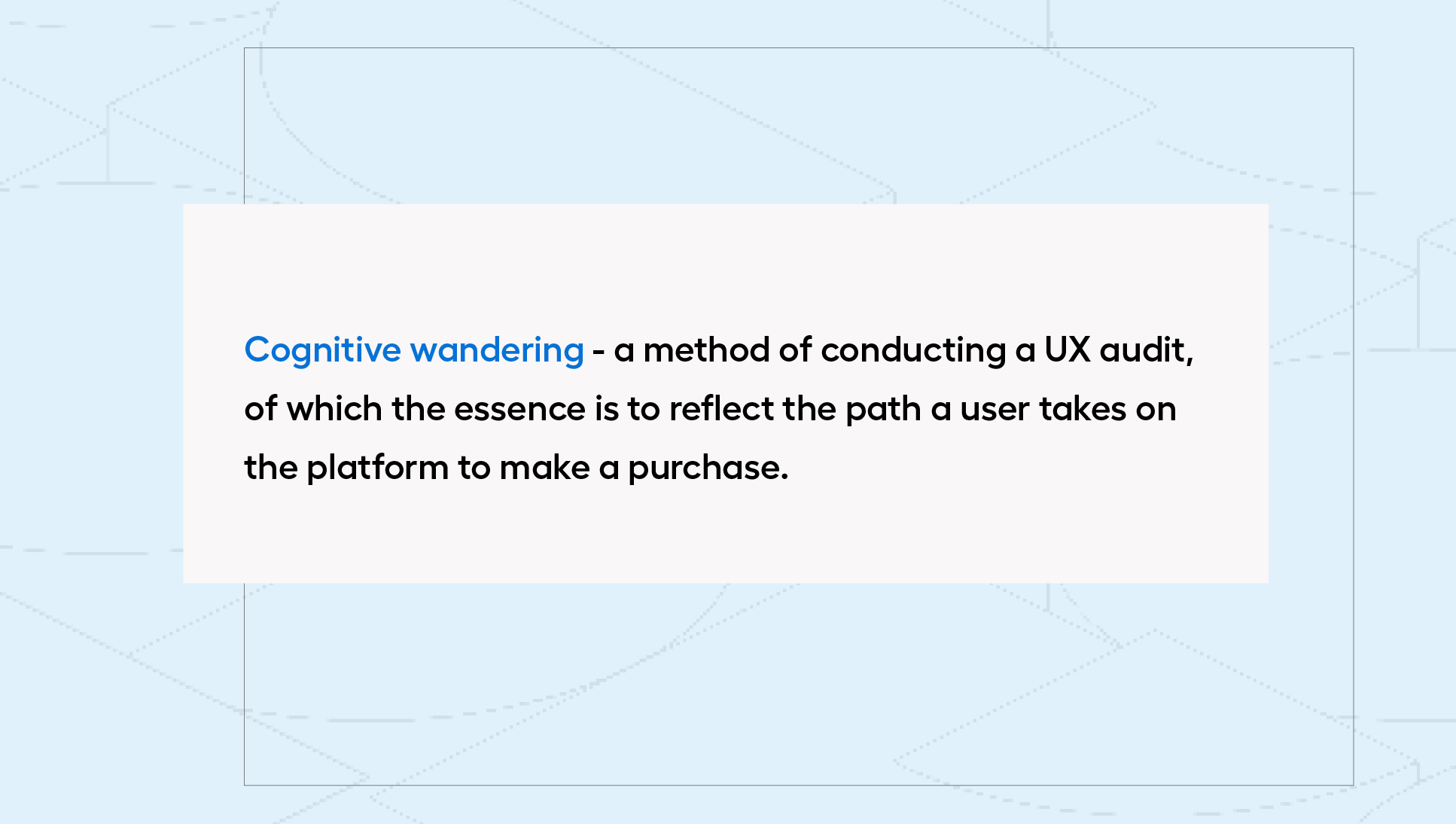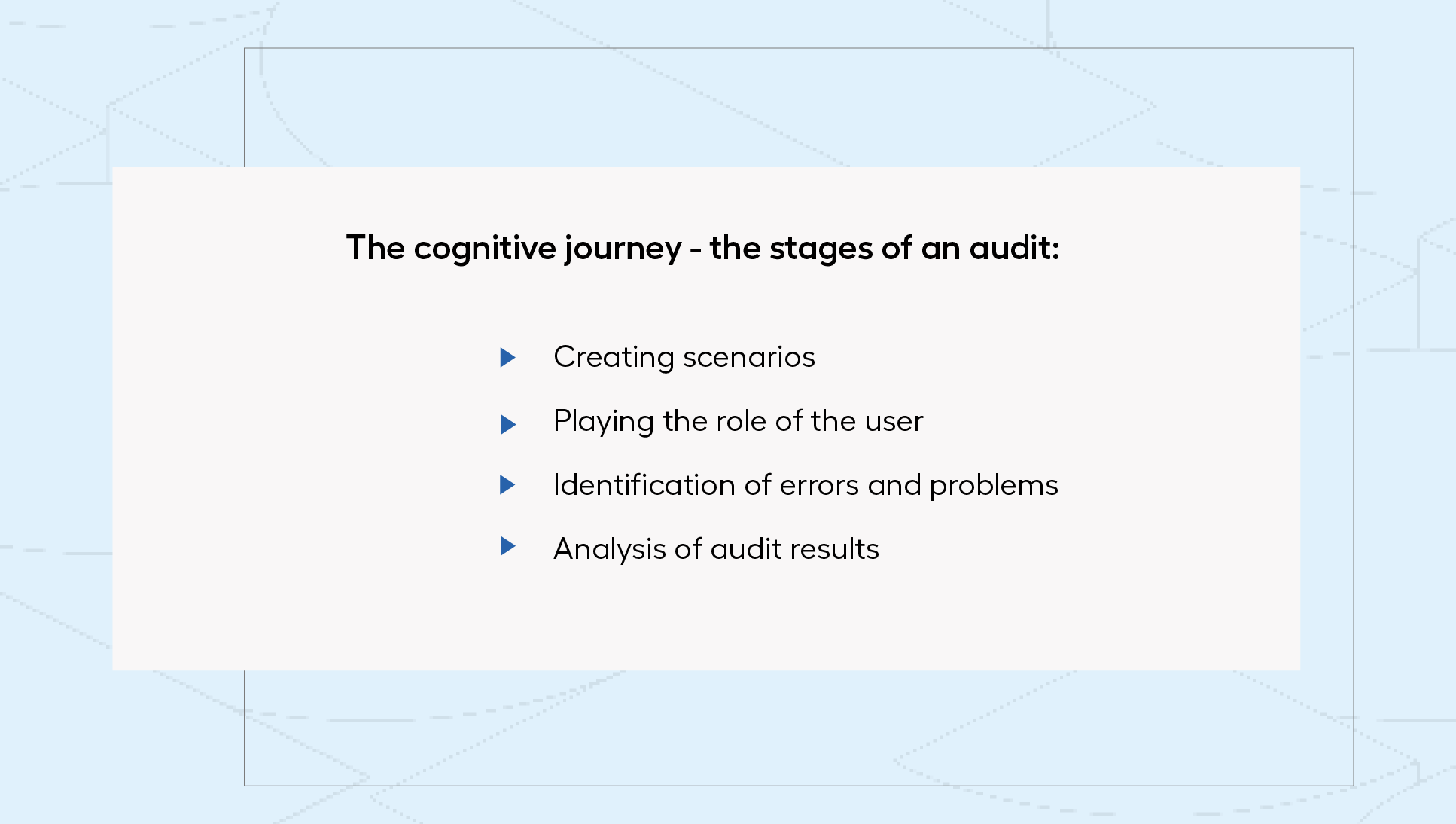Following the customer - how to conduct an eCommerce audit using the cognitive journey method?
What do customers feel when they first visit a newly discovered online store? It seems impossible to give a definite answer to this question, since customers' emotions and expectations are often based on their individual characteristics and needs. Buyers may differ in many respects, such as age, approach to disposing of their own budget or level of familiarity with new technologies. Despite this, each of them has certain expectations about the shopping process in an online store - shopping should be simple, fast and intuitive. Typically, users navigate the site according to a certain pattern, assuming that each click will bring them closer to realizing their goal, i.e. placing an order. Avoiding mistakes when designing the purchase path according to these expectations will be helped by performing a UX audit using the cognitive wandering method, which allows you to take on the role of a customer of your eCommerce site. Discover its secrets by reading this article!
Audit through the eyes of the customer, or what a cognitive journey is all about
Cognitive wandering is one of the most popular methods of conducting an online store UX audit right next to heuristic analysis. While both of them are used to evaluate the usability and quality of a platform's interface, the way they are conducted differs significantly. While heuristic analysis involves evaluating the interface based on established rules (the so-called 10 heuristics), cognitive hike is based on understanding the actual reactions and experiences of users when interacting with the site. What other features distinguish this type of audit?

A cognitive journey can be compared to a trial-and-error method. A UX study conducted in this way involves presenting the user with a website he or she has never encountered before. An experienced auditor takes the role of the buyer and examines the various elements of the process. In this way, it is possible to verify whether the designed purchase path is in fact effective, that is, whether it leads the viewer to the designated goal (most often - placing an order). A detailed analysis also identifies areas that make it difficult for the user to go through the entire process.
The result of a cognitive hike is thus not only observations, but also a report describing errors, the elimination of which will improve the shopping experience and thus increase profits. The results can be similar to those obtained through heuristic analysis. For this reason, many eCommerce owners wonder which type of audit will be better for their business. The choice between the two methods depends on the goals of the audit and the resources and UX expertise available. In some cases (e.g., having a large online store), you can use both methods to get a comprehensive evaluation of your online store.
Not just error detection - what else does a UX audit bring?
Getting acquainted with the offer, adding the product to the shopping cart and efficiently placing the order - at first glance it might seem that such a purchase path is correct and meets all users' expectations. However, is such an observation certainly true? Often, despite the proper design of the shopping path, not all of its elements (e.g. additional facilities such as a virtual fitting room or a price comparison engine) are used by the user. The reasons for inaction are not necessarily always complex. In many cases, it may be that the user simply doesn't notice them. How to avoid such a scenario? A UX audit can prove helpful not only in detecting obvious errors, but also in pointing out how to deploy innovative functionalities on the site so that users can easily use them. However, these are not all the additional benefits associated with conducting an audit. A cognitive hike also guarantees:
- in-depth recognition of the audience group - cognitive wandering also promotes better recognition of the emotions the site evokes in users. This allows you to tailor the interface to users' needs and preferences.
- process optimization - UX study can also be used to improve the functioning of the platform, when the user has multiple paths of action to choose from, and the goal can be achieved in different ways. Cognitive journey then allows to choose this most optimal path.
- Increase time spent on the site - improving the usability of the interface by using cognitive journey can result in users spending more time on the site. If the interface is intuitive and appealing, browsers are more likely to explore the site's content, which in turn can increase engagement and translate into more conversions.
- Increase user trust - An interface that is easy to use and works without problems builds user trust in the brand. This can be crucial, especially if your online store operates in a competitive industry.
Step by step - cognitive journey in practice
Conducting an audit using the cognitive journey method is a process that requires meticulous attention to detail, but also maintaining a sense of naturalness while doing it. How to achieve such an effect? First of all, it is crucial to create scenarios of actions that users can take on an e-commerce site. Then the auditor, equipped with experience and knowledge, takes on the role of the user and performs these actions step by step, checking all possible processes on the site.

Each step of the user's path is carefully analyzed for intuitiveness, the ability to perform it independently and the ability to interact with the site. The resulting findings are described in detail and evaluated for possible irregularities. Detected errors are usually classified according to a scale that divides them into:
- Minor errors - do not significantly affect the user's actions, e.g. no progress indicator when placing an order,
- Major errors - can affect the user's experience e.g. lack of shipping cost information in a prominent place,
- Critical errors - have a significant impact on the user's actions and can lead to abandonment of the shopping cart e.g. complicated payment method.
When examining individual errors, however, it is worth analyzing the relevance of each error separately. Often you may find that a seemingly minor error can significantly affect users' decisions. If you know that your customers care about placing orders quickly, providing them with a tool to estimate the time it takes to purchase products is important. In this case, placing a progress indicator will be essential to maintain a positive shopping experience, as it will avoid frustration and feelings of uncertainty. For this reason, the correctness of the interface is worth evaluating additionally based on additional criteria. Each step of the path should be:
- Doable on their own - the user should be able to achieve the desired goal on their own and without any help.
- Intuitive- the user should be aware of what phase of the process he or she is in.
- Predictable and transparent - the system should keep the user informed about the transition to the next stage, ensuring user satisfaction and certainty about the exact steps still left to complete the interaction.
- Pleasing-creating an interface that is attractive, aesthetically pleasing and easy to read can increase customer confidence, improve the shopping experience and contribute to increased sales and brand loyalty.
A new look at eCommerce - why is it worth a character on a cognitive journey?
Even minor UX errors can affect the overall satisfaction of users and the quality of their dd-experience. This phrase is particularly pertinent for new users and potential customers who are unfamiliar with the site, but already have certain expectations of it from the very beginning. For this reason, a UX audit conducted with the help of a cognitive hike becomes an important tool in improving the user interface. Cognitive journeying allows you to see the platform through the eyes of the buyer. Taking this perspective is key to creating a platform that meets customer expectations. The cognitive journey is worth betting on regardless of the size or type of your store's offerings. Don't wait, embody your shoppers and provide them with an unforgettable shopping experience!



